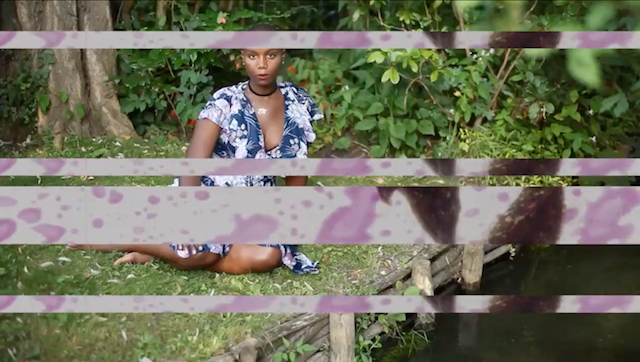‘The past is a foreign country,’ the British novelist L.P. Hartley famously wrote, ‘they do things differently there.’ Brooklyn-based Ja’Tovia Gary’s six-minute film An Ecstatic Experience (2015), fuses an account of nineteenth-century slavery in the US South as recalled by a former slave in 1937, reenacted in 1965 and reedited for the twenty-first century. Black-and-white TV footage shows the American actress, poet and civil-rights activist Ruby Dee channelling Fannie Moore (a former enslaved woman) describing the revelatory moment at which her mother declared that their enslavement was over: ‘It troubled her in her heart, to know the way we was treated.’ Dee’s emotive performance is accompanied by other found footage of church services (and later a choir performing ‘The Battle Hymn of the Republic’ from that same TV show), colour footage of the 2014 riots in Ferguson and the 2015 riots in Baltimore (both following episodes of police brutality or discrimination of a racially charged nature). Through the course of the film, ecstasy is framed as being both liberating and violent; history as cyclical; the past as a foundation of the present and anything other than a foreign country.
Gary, whose work appears as much in the context of film festivals as it does art exhibitions, takes things a step further, integrating the medium with the message. The footage in An Ecstatic Experience is intercut or interrupted by a series of animations scratched into the celluloid by the artist. At times the scratches seem microbial, at other times like halos (suggestive, for example, of a tribute to Dee), still others like prison bars, and elsewhere like the traces of psychic emissions. The film is literally scarred, yet beautiful, and more importantly perhaps, personal: executed in a medium that’s touched, in that increasingly old-fashioned way, by the hand of the artist. Evidently this is her work.
This heady mix is further explored in the film Giverny I (Négresse Impériale) (2017), which mixes footage of a black female body (the artist’s) posing in Claude Monet’s garden with archive footage of the Frenchman painting en plein air, and found footage of a black female responding to the shooting of her boyfriend by police, all accompanied by a soundtrack of Louis Armstrong singing La Vie En Rose and Gary’s signature animations. The end result is something that flickers between drawing, collage and filmmaking, a portrait of a black female body inserting itself into an artificial landscape composed around and framed by expressions of (largely white) male power. Forces made visible as a first step towards resistance.
Gary, a founding member of the New Negress Film Society, is currently working on a new film, The Evidence of Things Not Seen. Her work is included in God Made My Face: A Collective Portrait of James Baldwin at David Zwirner, New York through 16 February. She will have a solo show at Galerie Frank Elbaz, Paris, 2 February – 20 April.
Mark Rappolt is Editor-in-Chief of ArtReview
From the January and February 2019 issue of ArtReview, in association with K11 Art Foundation
